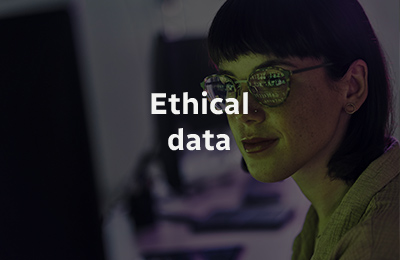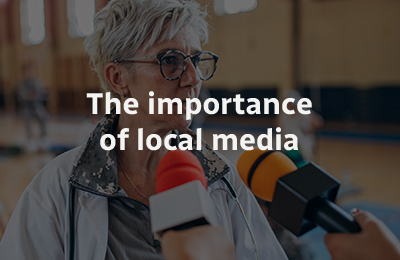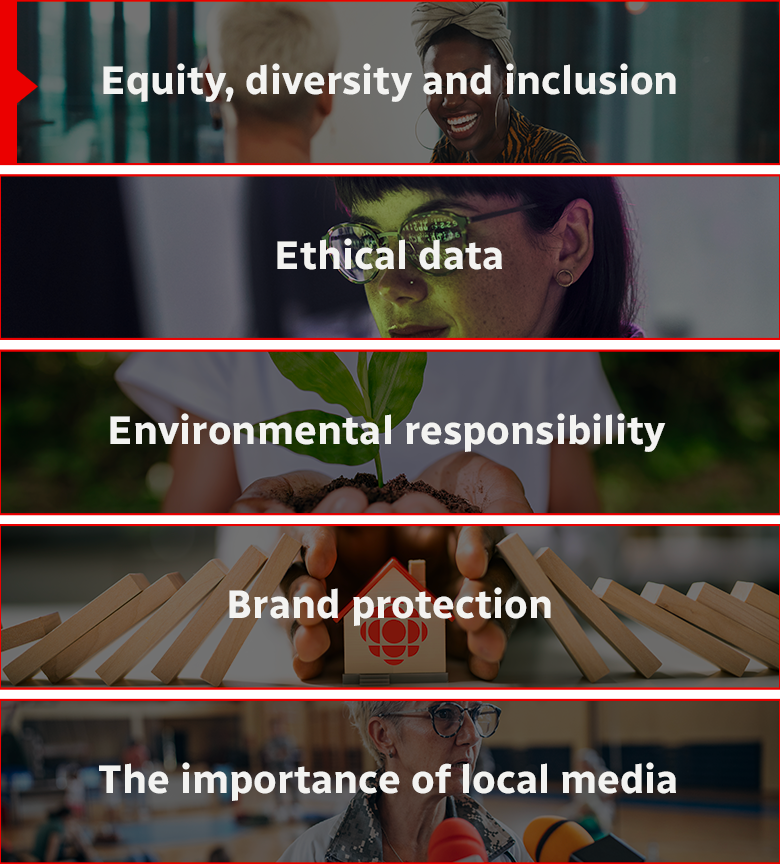

Programming Slate Summary
PlatformsAdvertising offers by platform
ShowsCurrent programming directory
Schedule GridsBroadcast schedules by platform
Creative FormatsAvailable types of advertising
Technical SpecsAdvertising standards and formats
Customized advertising solutions
Branded ContentCustom storytelling solutions
Commercial ProductionIn-house production services
MAX CBC/Radio-CanadaDigital ad buying platform
CarbonIQ Emissions CalculatorTool for measuring emissions from your campaigns
Distribution - Archive SalesAccess to CBC/Radio-Canada's archives







"I can listen to an entire ad and have no idea what product it's selling. All I hear is music or background sounds. Advertisers miss out on the purchasing power of people with disabilities when they fail to make their content accessible."
This statement highlights a major issue: when an ad isn't accessible, an audience is lost. Nearly 27% of Canadians have a disability*—a significant market that many advertisers overlook without even realizing it.
To maximize the impact of your campaigns while promoting inclusion, here are some best practices to consider:
Subtitles: A Must in a Distracted World |
|
In a world where attention is constantly divided, subtitles are essential. They engage viewers who watch without sound—on public transport, at work, or while scrolling through their feeds—and improve message comprehension for everyone, not just those who are Deaf or hard of hearing. |
|
Best practices:
|
Audio Description: Bringing Visuals to Life |
|
Audio description provides verbal narration of visual elements, allowing blind and visually impaired audiences to fully engage with an ad. By describing key actions, facial expressions, settings, and on-screen text in a clear and objective manner, ads become truly inclusive. |
|
Best practices:
|
Contrast: A Simple Yet Powerful Tool |
|
High-contrast text isn't just a design choice—it's a fundamental part of effective communication. A dark text on a light background (or vice versa) ensures readability for everyone, including those with visual impairments or those viewing content in bright sunlight. |
|
Best practices:
|
Representation: Inclusive and Authentic |
|
True representation goes beyond simply including people with disabilities—it’s about how they are portrayed. Individuals want to be seen in their full diversity, as part of everyday life, rather than being defined by their disability. Most disabilities are invisible, making authentic and nuanced representation even more important. |
|
Best practices:
|
Source
https://www150.statcan.gc.ca/n1/daily-quotidien/231201/dq231201b-eng.htm
Select an option to advertise in the CBC/Radio-Canada ecosystem


We and select advertising partners use trackers to collect some of your data in order to enhance your experience and to deliver personalized content and advertising. If you are not comfortable with the use of this information, please review your device and browser privacy settings before continuing your visit.